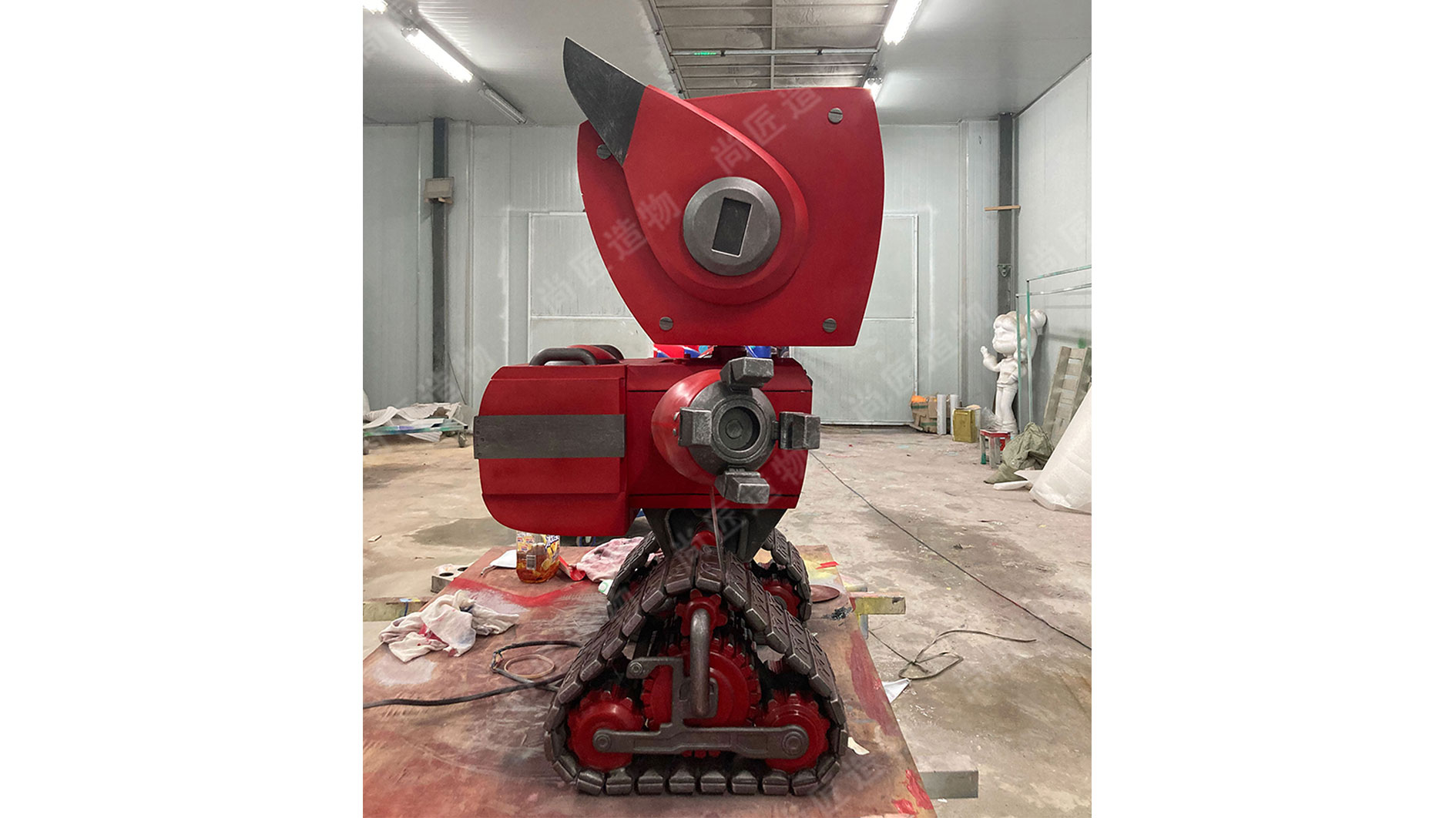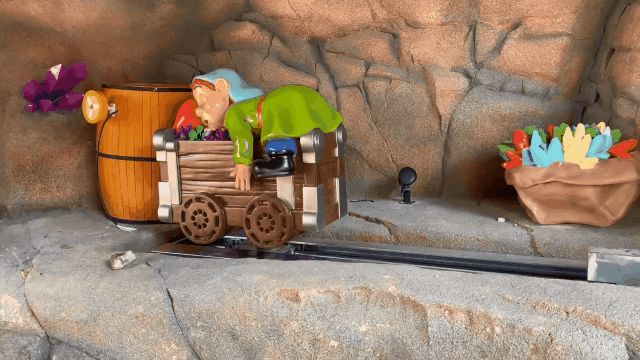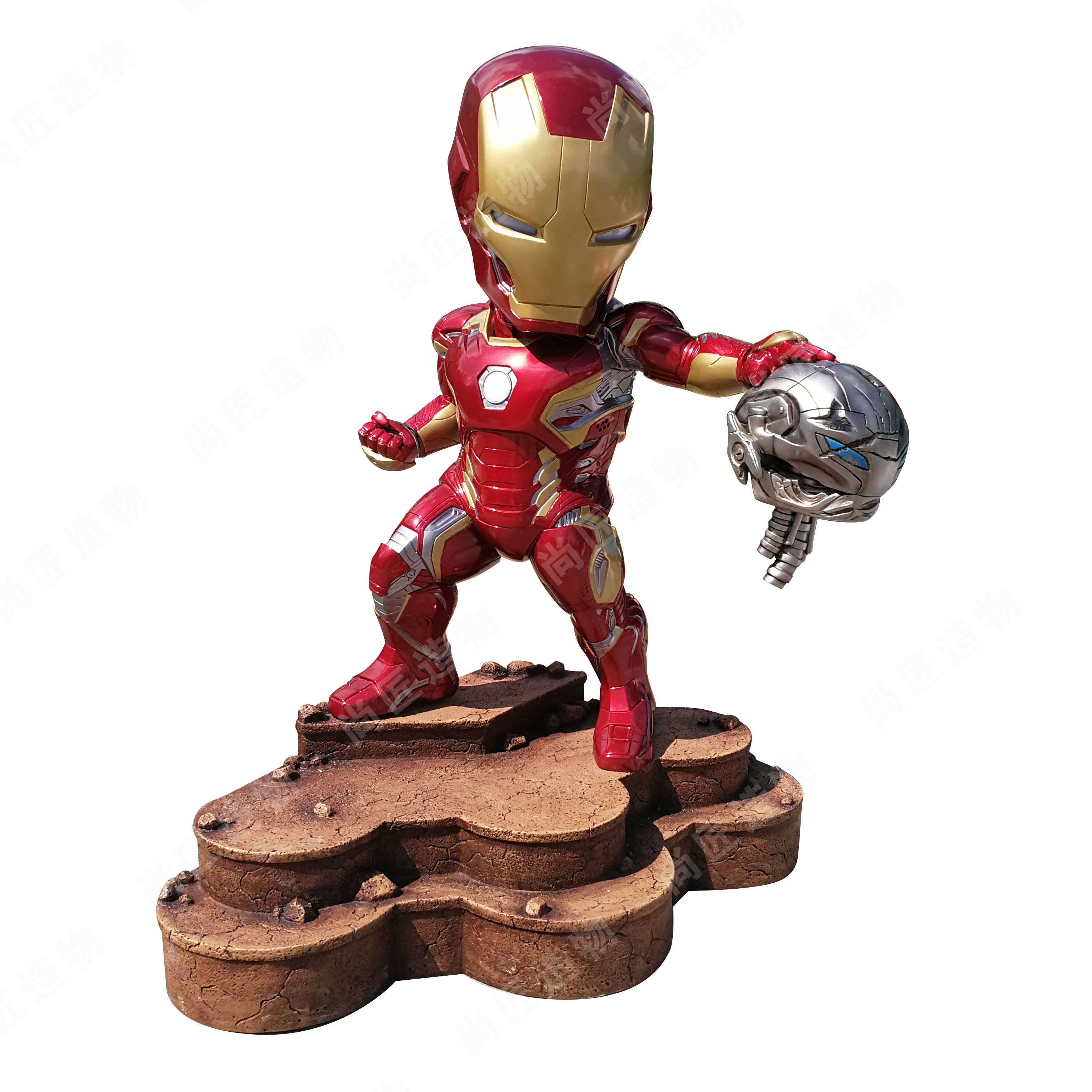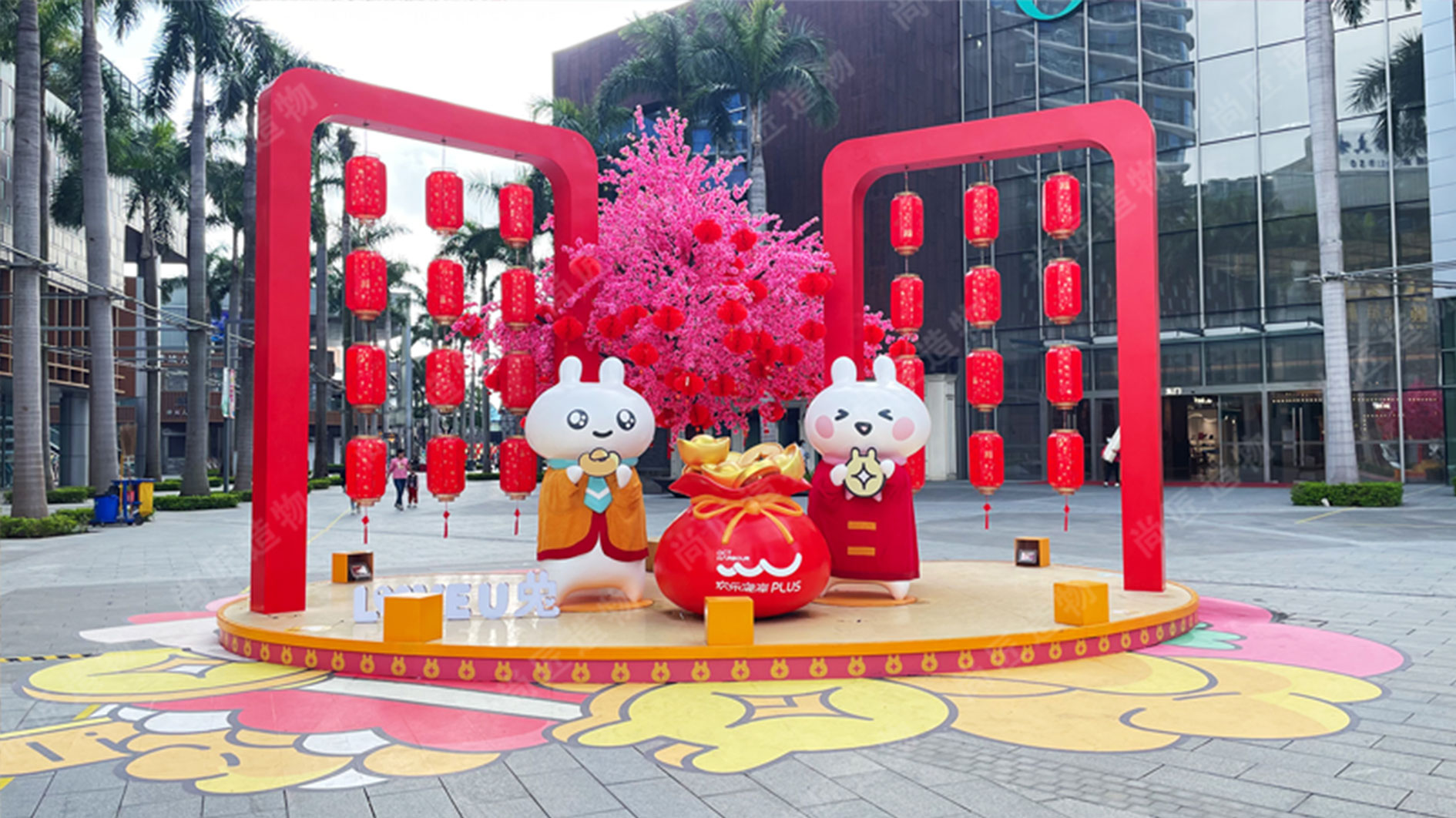Key Takeaways
Polished steel statues represent a fusion of artistic vision and engineering precision, combining aesthetic appeal with structural integrity. These sculptures primarily use 304 stainless steel, a material chosen for its corrosion resistance, strength, and ability to hold mirror-like finishes. Advanced techniques like MIG welding ensure seamless joints and durability, critical for both indoor installations and outdoor public art. Beyond their visual impact, these statues serve functional roles in luxury interiors—acting as focal points in lobbies or galleries—and in architectural spaces, where they complement modern designs through geometric forms or abstract shapes. The creation process often incorporates 3D modeling software, allowing artists to refine proportions and test load-bearing calculations before fabrication. Maintenance involves routine cleaning with pH-neutral solutions to preserve the polished surface, ensuring decades of longevity. While rooted in industrial-grade materials, the artistry lies in transforming cold metal into dynamic forms that reflect light, interact with surroundings, and evoke emotional responses from viewers.

Polished Steel Statues Defined: Art & Function
Polished steel statues represent a fusion of industrial precision and artistic vision. These sculptures combine mirror-like surfaces with structural integrity, creating pieces that serve dual purposes: aesthetic enhancement and functional durability. Unlike traditional bronze or marble statues, polished steel offers a modern aesthetic while resisting corrosion and weathering. The reflective quality of the material interacts dynamically with light, transforming static forms into ever-changing visual experiences as ambient conditions shift.
"A polished steel statue isn’t just an object—it’s a dialogue between form, environment, and observer," notes sculptor Elena Voss, whose work adorns corporate lobbies worldwide.
| Feature | Artistic Impact | Functional Benefit |
|---|---|---|
| Reflective Surface | Creates light-play effects | Resists UV damage |
| 304 Stainless Steel | Enables precise detailing | Withstands extreme temperatures |
| Seamless Welding | Maintains clean lines | Prevents structural weaknesses |
These statues often anchor public plazas or Cartoon sculpture installations, blending into both minimalist interiors and bold architectural statements. For optimal longevity, professionals recommend periodic cleaning with pH-neutral solutions to preserve the finish without compromising the metal’s protective oxide layer.

304 Stainless Steel in Sculpture Crafting
304 stainless steel has become the gold standard in metal sculpture production due to its balanced composition of 18% chromium and 8% nickel. This alloy combination creates a passive oxide layer that resists corrosion, making it ideal for both indoor installations and outdoor public art exposed to rain, humidity, or temperature fluctuations. Unlike carbon steel alternatives, 304-grade material maintains structural integrity for decades while requiring minimal maintenance—a critical factor for permanent installations.
The metal’s medium hardness (https://en.artmovr.com/) projects requiring lifelike metallic surfaces.
Modern foundries employ argon-shielded environments during welding to prevent carbide precipitation at grain boundaries, ensuring the finished artwork won’t suffer from intergranular corrosion. This technical rigor, combined with the alloy’s inherent recyclability, positions 304 stainless steel as both an artistically flexible and environmentally conscious choice for contemporary sculptors.

MIG Welding Techniques for Metal Artworks
MIG (Metal Inert Gas) welding has become a cornerstone technique for crafting polished steel statues, combining precision with industrial-grade durability. This method uses a continuously fed wire electrode and inert shielding gas—typically argon or a mix of argon and carbon dioxide—to create clean, oxidation-free welds. For 304 stainless steel sculptures, MIG welding ensures seamless joints that withstand outdoor weathering while maintaining the metal’s signature luster. Artists favor this process for its ability to handle complex curves and intricate details, essential for translating 3D designs into tangible forms. Unlike traditional welding methods, MIG’s controlled heat input minimizes warping, preserving the sculpture’s geometric integrity. When paired with post-weld polishing, the technique produces mirror-like finishes that define luxury metal art.
While stainless steel dominates modern sculpture, alternative materials like fiberglass sculpture offer contrasting textures for mixed-media installations. However, MIG welding remains unmatched for projects demanding structural resilience, such as large-scale architectural pieces or indoor centerpieces exposed to frequent handling. The method’s adaptability also supports custom fabrication, enabling artists to experiment with abstract forms without compromising load-bearing requirements. This synergy of artistry and engineering underscores why MIG techniques are indispensable in transforming raw metal into enduring polished masterpieces.
Durability of Stainless Steel Sculptures
The exceptional durability of polished stainless steel statues stems from the inherent properties of 304-grade stainless steel. Containing 18% chromium and 8% nickel, this alloy forms an invisible oxide layer that resists corrosion, rust, and staining—even in coastal environments or urban settings with high pollution. Unlike traditional bronze or iron sculptures, these works maintain structural integrity for decades, withstanding temperature fluctuations (-170°C to 800°C) without warping or cracking.
Advanced MIG welding techniques ensure seamless joints, critical for preserving both aesthetic appeal and load-bearing capacity in large-scale installations. For projects requiring intricate designs, such as IP character sculptures, the metal’s tensile strength (520-750 MPa) allows precise shaping while retaining weather resistance. Architects value this material for permanent outdoor installations, as UV exposure causes minimal color shift compared to painted surfaces.
Maintenance remains minimal—annual cleaning with pH-neutral solutions typically suffices to restore mirror finishes. This resilience makes stainless steel sculptures cost-effective long-term investments, outperforming organic materials like wood or stone in high-traffic public spaces and luxury interiors alike.

Luxury Interior Design With Steel Statues
Polished steel statues have become a hallmark of modern luxury interiors, blending artistic expression with functional elegance. These sculptures, typically crafted from 304 stainless steel, offer a unique combination of durability and aesthetic versatility. Their mirror-like finish reflects ambient lighting, creating dynamic visual effects that enhance spaces ranging from penthouse lobbies to minimalist living rooms. Interior designers often use these statues as focal points, positioning them near staircases, entryways, or alongside floor-to-ceiling windows to maximize their reflective properties.
The integration of steel artworks into high-end design schemes relies on their adaptability. Customizable through advanced 3D modeling, sculptures can be tailored to complement architectural elements like curved walls or geometric furniture. For example, a kinetic sculpture with rotating stainless steel components adds movement to otherwise static environments. Unlike traditional decor, these pieces require minimal maintenance due to stainless steel’s corrosion resistance, making them ideal for humidity-prone areas such as spa-like bathrooms or indoor pools. Their neutral metallic tones also pair seamlessly with materials like marble, walnut, or brushed brass, ensuring cohesion in eclectic design palettes.
Architectural Spaces Enhanced by Steel Art
Polished steel statues have become transformative elements in modern architecture, merging structural innovation with aesthetic boldness. Architects and designers increasingly incorporate stainless steel sculpture into public plazas, corporate campuses, and mixed-use developments to create focal points that harmonize with their surroundings. The reflective surfaces of 304 stainless steel interact dynamically with natural light, casting ever-changing patterns that animate urban environments.
These sculptures often serve dual purposes: as standalone art pieces and functional design components. For example, large-scale steel installations may double as shade structures or wayfinding markers in parks, while geometric forms integrated into building facades enhance visual rhythm. The use of MIG welding ensures seamless joints, critical for maintaining both structural integrity and the mirror-like finish expected in high-end projects.
Durability remains a key advantage, as stainless steel resists corrosion from weather extremes, making it ideal for outdoor installations. Additionally, 3D modeling allows artists to tailor designs to specific spatial constraints, ensuring sculptures complement architectural lines rather than compete with them. From minimalist abstract shapes to intricate figurative works, steel art bridges the gap between engineering precision and creative expression, redefining how spaces engage with their audiences.
3D Design Process for Custom Statues
The creation of polished steel statues begins with advanced 3D modeling, a critical phase where artistic vision meets engineering precision. Designers use software like AutoCAD, Rhino, or ZBrush to translate sketches into detailed digital blueprints. These programs allow for millimeter-level accuracy, ensuring complex curves and geometric patterns align with structural integrity requirements. For site-specific installations, laser scanning or photogrammetry may capture spatial data to integrate the sculpture seamlessly into its intended environment.
During prototyping, 3D-printed scale models test proportions and light reflection properties unique to 304 stainless steel. This phase often involves iterative adjustments—thickening stress-bearing areas or refining surface angles to optimize the mirror-like finish. Advanced rendering tools simulate how ambient light interacts with the polished surfaces at different times of day, enabling designers to predict visual impact before fabrication.
The finalized 3D files guide CNC machining for base components, while hand-forged elements preserve artistic nuance. This hybrid approach balances industrial efficiency with artisanal craftsmanship, ensuring each custom statue meets both aesthetic and functional demands. As the design phase concludes, technical specifications flow directly into production workflows, bridging digital innovation to physical artistry.

Maintaining Polished Steel Artwork Longevity
Proper care ensures polished steel statues retain their brilliance for decades. Begin with regular cleaning using pH-neutral soap and warm water, applied with microfiber cloths to prevent micro-scratches. Avoid abrasive pads or chemical cleaners, which can dull the mirror-like finish. For outdoor installations, rinse monthly to remove salt deposits or pollutants, particularly in coastal or urban environments.
Protective wax coatings designed for stainless steel add an extra barrier against fingerprints and moisture. These coatings, reapplied annually, help maintain luster while reducing maintenance frequency. Indoor pieces benefit from controlled humidity levels (ideally below 60%) to minimize condensation-related spotting.
Inspect mounting hardware and structural joints annually, tightening any loose components to prevent stress fractures. For oxidation spots—rare in 304-grade stainless steel—use a specialized stainless steel polish rather than generic metal cleaners. Professional conservators recommend laser surface treatments for deep scratches, which restore uniformity without compromising the metal’s corrosion resistance.
By integrating these practices, collectors preserve both the aesthetic and functional qualities that make polished steel sculptures enduring investments in luxury spaces.

Conclusion
Polished steel statues embody the intersection of artistic expression and engineering precision. As demonstrated throughout this exploration, their creation relies on meticulous processes—from the selection of 304 stainless steel for its corrosion resistance to the application of MIG welding for seamless joints. These sculptures are not merely decorative objects but functional investments, capable of enduring harsh climates while maintaining their reflective brilliance. The integration of 3D design technology ensures that even the most intricate concepts can be realized, offering tailored solutions for luxury interiors and architectural projects alike.
Their versatility extends beyond aesthetics, serving as focal points in corporate lobbies, public plazas, or private residences. By combining durability with timeless design, polished steel artworks bridge the gap between traditional craftsmanship and modern innovation. Regular maintenance, such as gentle cleaning and protective coatings, further extends their lifespan, ensuring they remain striking centerpieces for generations. Ultimately, these statues exemplify how material science and artistic vision can coalesce to create enduring symbols of cultural and architectural identity.

FAQs
How does 304 stainless steel enhance statue durability?
304 stainless steel contains 18% chromium and 8% nickel, forming a passive oxide layer that resists corrosion. This makes sculptures suitable for both indoor and outdoor environments, even in humid or coastal areas.
What distinguishes MIG welding in steel statue creation?
MIG (Metal Inert Gas) welding ensures precise, clean joins by using a continuous wire feed and shielding gas. This method minimizes visible seams, critical for achieving mirror-like finishes on polished surfaces.
Can polished steel statues withstand extreme weather?
Yes. The material’s rust-resistant properties, combined with professional sealing treatments, allow these artworks to endure temperature fluctuations, UV exposure, and precipitation without losing structural integrity or shine.
How do 3D design processes improve customization?
Digital modeling lets artists refine proportions, textures, and balance before fabrication. Clients can preview adjustments in virtual simulations, ensuring the final piece aligns with architectural or interior design themes.
Are polished steel sculptures high-maintenance?
Routine care involves wiping with a microfiber cloth and mild detergent. For outdoor installations, annual inspections and wax coatings help preserve the surface against environmental wear.
Why are steel statues popular in luxury interiors?
The reflective quality of polished steel adds depth and light diffusion to spaces. Its neutral metallic tone complements modern aesthetics while serving as a focal point in minimalist or avant-garde designs.
 ch
ch English
English






